Dasha is one of the open secrets of astrology in general, mainly used to time events and has uses beyond mere timing of events. Like other aspects of astrology, this too is quite complex.
Dasha — the term in Sanskrit has many meanings like period, condition, circumstance, but for astrological purposes, it means planetary (operative) period. Dasha indicates that each Planet is assigned a specific duration, during which they have more say over various matters they influence in a native’s chart. Of the many Dasha systems, the most famous is the Vimshottari (means 120), Dasha. In this system, 120 years of human life are unequally divided among the nine Planets. We will avoid getting into the details of how this division of years is made, as there are many different Dasha systems, each having its calculations and applications.
Each Dasha has a basic structure; it is further subdivided into groups that go from broad to fine durations of time. It has the Mahadasha — Antardasha — Pratyantardasha —Sookshma —Prana-Antar Dasha —Deha Antar Dasha. The Mahadasha is the largest division (usual in years) to Deha Antra Dasha (can be just a day-long). All the subdivisions are divided amongst the nine planets in a sequence. Like mentioned earlier, this is used to time an event that the chart may indicate. Say in a native’s chart; it shows a child’s birth, then when it will happen can be determined from this Dasha system.
The same goes for many other yogs that may fructify in a person’s life. Here’s the Vimshottari table for Dasha, which always start from Ketu and ends Mercury.
|
Graha |
Mahadasha |
| Ketu | 7 Years |
| Venus | 20 Years |
| Sun | 6 Years |
| Moon | 10 Years |
| Mars | 7 Years |
| Rahu | 18 Years |
| Jupiter | 16 Years |
| Saturn | 19 Years |
| Mercury | 17 Years |
One can easily observe some planets have extremely long periods, while others are relatively short; this has many implications and meanings too. For example, Venus indicates luxuries, happiness, and similar attributes. Thus, 20 years of life are assured with Venusian things, though the quality/quantity may vary depending on Venus’s position in the chart. Once Venus’s period is over, begins the Sun period of 6 years. Sun shows power, status, fame, which we all know never last for long. These things are always short-lived.
The Vimshottari Dasha (VD) system is a Nakshatra based system, ie. Its calculation for a native is based on the Nakshatra in which the Native is born. Thus, VD’s sequence is set, but it may not be the same start point for all the people born on earth. For some, it may begin with, say, Venus-Sun-Moon, while for someone, it may start with Mercury -Ketu-Venus. The VD’s start point depends on the birth of the Native, in other words, when the Native died last time and how much Dasha balance is left. It means the Dasha will not always start from midway too. (Isn’t this complex). However, Dasha’s balance is a passage of time in the current birth, but few astrologers also use it to understand the soul’s make. Where it comes from and what its state is. In other words, we may use it to understand the soul’s past life. In such a case, past life usually means the recent, the immediate past life. But that does not mean the soul has taken birth immediately after it died in the previous life; a soul can wait centuries (depending on Karm it has) before it takes re-birth. You might also ask, why is there an assumption that the soul is in human form in each life? I guess I will leave that here, for now, as that’s beyond the Dasha concept.
Let’s say someone is born, say in Nakshatra of Mool (which belongs to Ketu): this means that the Native was born when the Ketu’s period was operative. We need to know how much time has passed to the day the Native was born. Depending on the birth date, we can calculate this. In our example, let’s assume it turns out that out of 7 years of Ketu, five years have passed, which means that the Native will have his initial two years of life ruled by Ketu, then by Venus. These remaining years of a ruling planet at birth are called the Dasha balance.
Another example if a native is born when two years of Venus Dasha has passed, which means the Native gets 18 years of Venus dash right from birth. This Venus (depending on how its place in the chart) will give its results. Depending on which Planet is ruling and the Planet’s position in the Native’s chart, he/she may have ups and down: this is a reason why one can see few children are cranky, others are not, few are on the verge of ADHD while few are immobile as a rock. It also shows how a person has a distinct personality and how it changed to something altogether different.
Dasha is quite an excellent tool to delineate what a person may have over a long time. And this is precisely used to scare the Native. For example, If a female is born at the start of Ketu Dasha with six years Dasha balance, then by the time she reaches Saturn Dasha, she will be 83 years of age. And if in the chart Saturn is, say, in control of the native children, it would not be wise to predict that she will get children at 83. An astute astrologer will misuse such aspects to scare the Native and recommend some havan or puja.
The same can happen in various other cases. Say a native is born at the end of Venus Dasha with a balance of just a year. Thus one year after birth, the Sun’s Dasha will start. And if the chart indicates a strong Lakshmi yog involving Venus, then fruition of such an event in its full effect will not happen. Venus will bestow Lakshmi during its Antara period of some other planet, but Native’s period to enjoy the yog’s full blessing is already gone.
There are cases where the chart indicates some excellent yog, but those planets’ planets may never arrive during the right age for the Native—then making predictions based on just yog will end in error. Added the astrologer always tends to use colorful terms for Dasha as “Bad” Dasha, “Weak” Dasha, “Strong” Dasha, which tends to influence the mind of the client. The Native must always remember that nothing is good or bad; it’s just balancing your own Karma.
Let me digress a tad bit: Karm Correction one must understand there is no such thing. One cannot correct Karm; one can only create a new Karm. This principle of correcting Karm goes against the basic tenet of Karm. Once the tree is laden with fruits, you cannot undo it; you can destroy the fruits (creating new Karm) or enjoy the fruits (generating new Karm) but cannot UNDO it. Anything and everything that you do, even if you ignore the fruits, it counts as Karm. Thus there is no Karm correction; the only way is to reap the fruits of that action and balance it out.
Usually, Saturn/Shani -is the astrologer’s WMD for creating fear. Shani for long is feared, and his image quite tarnished, which boosts the astrologers’ bank balance.
In whatever minimal study I have in this field, I have never seen Shani causing any of the harm attributed to him; instead, he is the only Planet who delivers what he promises. I have seen Jupiter /Venus, the so-called boon givers, being mischievous and causing grave harm during their operative periods. These operative periods clubbed with current planetary transitions, also known as Gochar (Eng. Transits), are used brashly just for the astrologer’s benefit.
Gochar is also another important tool used to time events in combinations with the Dasha. Gochar means movement, in astrology indicates the current planetary positions instead of one’s birth planetary positions. As mentioned earlier, a Rashi chart is the snapshot of the sky when a child is born. But planets aren’t stationary (hence called as wander); they keep moving. For example, when the day native was born in the year, 2000 Jupiter was in Aries, but in 2006 he won’t be in Aries; instead, he will be in Virgo (ignoring the retrogression period). Jupiter takes one year to traverse a sign; thus, for Jupiter to be again in Aries will take 12 years. Say this native visits an astrologer in 2007; then we can say that the native Jupiter is in Aries and the Gochar Jupiter is in Libra. This native planet position to Gochar relation also indicates a yog, added if the Native is running Jupiter Dasha then if there is any yog involving Jupiter it may fructify.
What we discussed in this article makes astrological predictions extremely complex. As nothing is linear, we cannot consider a planet in isolation. When a Planet has its Mahadasha, then some Planet will have Antar-Dasha, another Planet will have Pratyantar-Dasha. In such cases becomes very important to find the relationship between all these planets. Let’s say it’s Jupiter Maha-Dasha, Venus Antar, and Moon Pratyantar. For a said event to occur, we need to study if Jupiter, Venus, and Moon have anything to do with that event; if yes, do they oppose it, support it, or are neutral. Depending on all the combinations, one has to arrive at some conclusion and make predictions. It can also happen that Jupiter Mahadasha, Jupiter Antar, and Jupiter Pratyantar might be a bit simple, but such timing is sporadic.
Like Vimshottari, there are many other (over 42) Dasha we can base on Nakshatra, Rashi, and other aspects. Each Dasha system has its overall running period, like Vimshottari has 120 years. Despite a relatively simple concept of Dasha, its usage creates blunders in results. Such loopholes are exploited by the astrologer, though it may not be scary as other practices in astrology, it is at the root of why many astrologers tend to make mistakes in what they do.



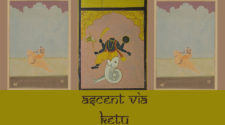
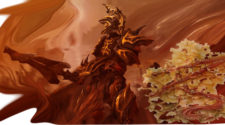


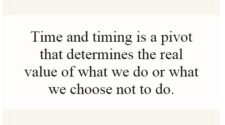


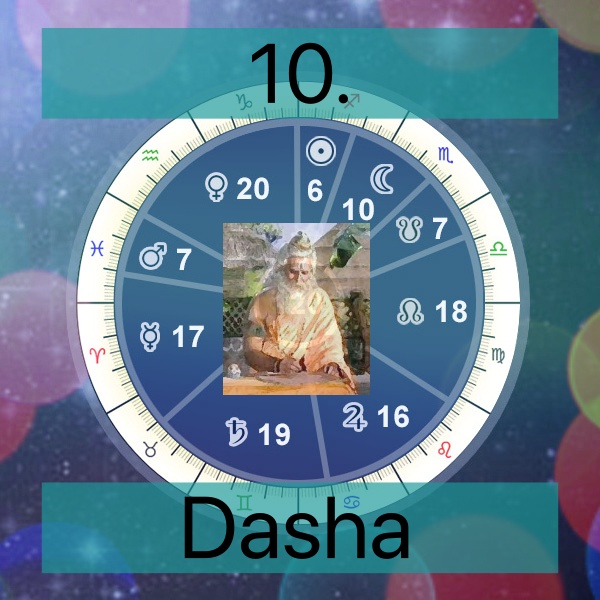

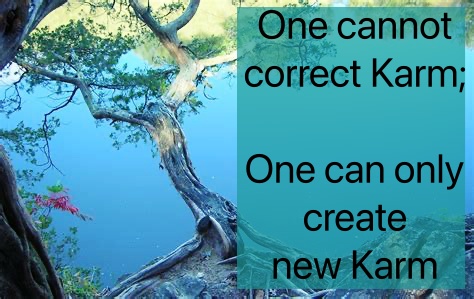

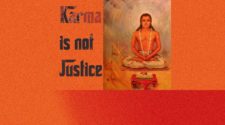

Nice to touch upon the basics,, but I would like a more detailed article focusing on just one of the Dasha’s and explain how each Dasha might present a general trend, it is not hunky dory all the way,, things fluctuate along the general trend as well